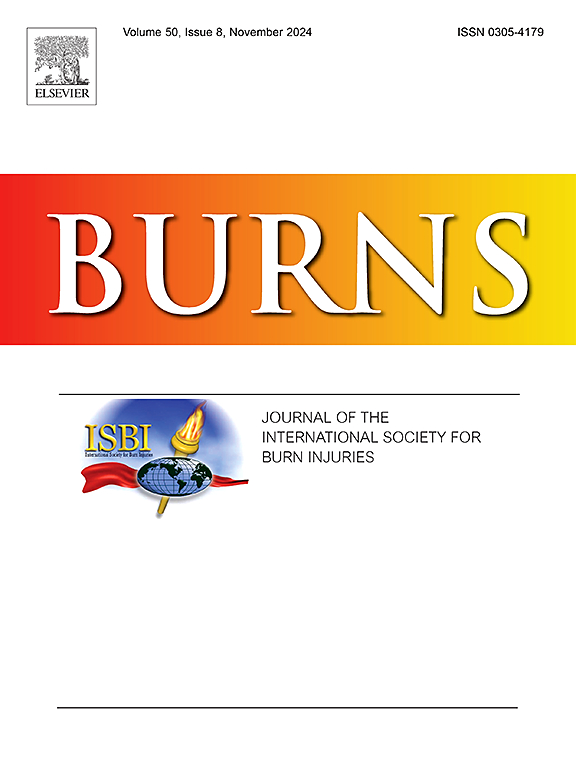Administration of Burns First Aid Treatment to Aboriginal and Torres Strait Islander children in community settings
IF 3.2
3区 医学
Q2 CRITICAL CARE MEDICINE
引用次数: 0
Abstract
Objective
This paper investigates Burn First Aid Treatment (BFAT) provided to Aboriginal and Torres Strait Islander children in Australia at the scene of injury using data from a population-based cohort study.
Study Design
The participants were 208 Aboriginal and Torres Strait Islander children aged < 16 years who sustained a burns injury between 2015–2018, and their carers. The primary outcome measure was gold standard BFAT, (defined as at least 20 min of cool, running water within 3 h of the injury); additional measures included type of first aid, length of first aid provided, and carer's knowledge of first aid.
Results
Of the 208 caregivers, 168 provided open-ended responses that indicated first aid was applied to their child; however, only 34 received gold standard BFAT at the scene of the injury, 110 did not receive correct BFAT, and 24 were unsure what first aid was applied.
Conclusion
This study highlights an important need for communities to have access to appropriate evidence-based and co-designed BFAT education and training.
在社区环境中对土著居民和托雷斯海峡岛民儿童进行烧伤急救治疗
本文章由计算机程序翻译,如有差异,请以英文原文为准。
求助全文
约1分钟内获得全文
求助全文
来源期刊

Burns
医学-皮肤病学
CiteScore
4.50
自引率
18.50%
发文量
304
审稿时长
72 days
期刊介绍:
Burns aims to foster the exchange of information among all engaged in preventing and treating the effects of burns. The journal focuses on clinical, scientific and social aspects of these injuries and covers the prevention of the injury, the epidemiology of such injuries and all aspects of treatment including development of new techniques and technologies and verification of existing ones. Regular features include clinical and scientific papers, state of the art reviews and descriptions of burn-care in practice.
Topics covered by Burns include: the effects of smoke on man and animals, their tissues and cells; the responses to and treatment of patients and animals with chemical injuries to the skin; the biological and clinical effects of cold injuries; surgical techniques which are, or may be relevant to the treatment of burned patients during the acute or reconstructive phase following injury; well controlled laboratory studies of the effectiveness of anti-microbial agents on infection and new materials on scarring and healing; inflammatory responses to injury, effectiveness of related agents and other compounds used to modify the physiological and cellular responses to the injury; experimental studies of burns and the outcome of burn wound healing; regenerative medicine concerning the skin.
 求助内容:
求助内容: 应助结果提醒方式:
应助结果提醒方式:


